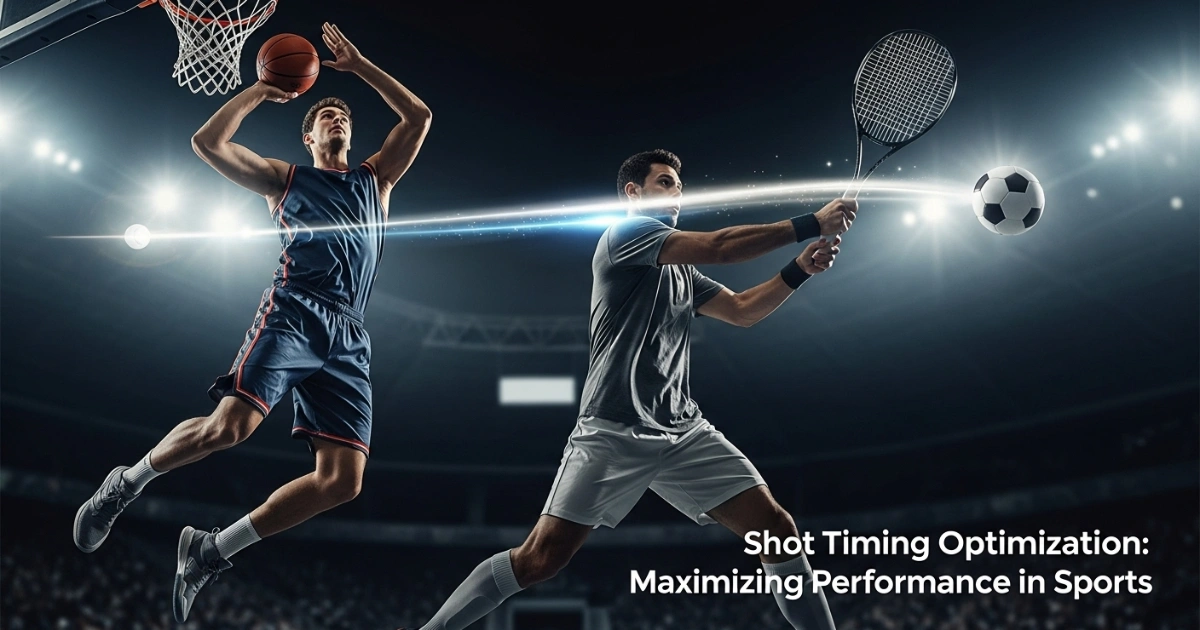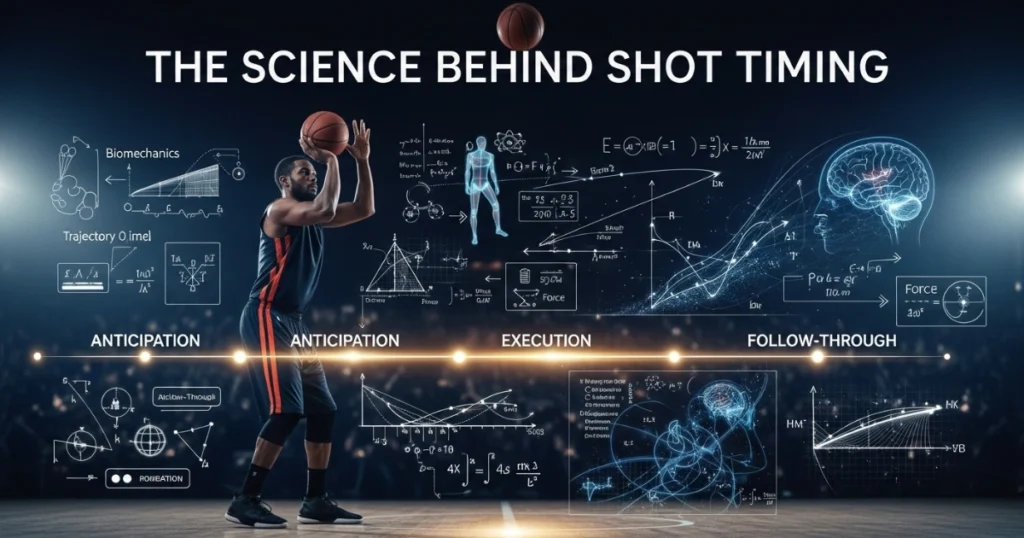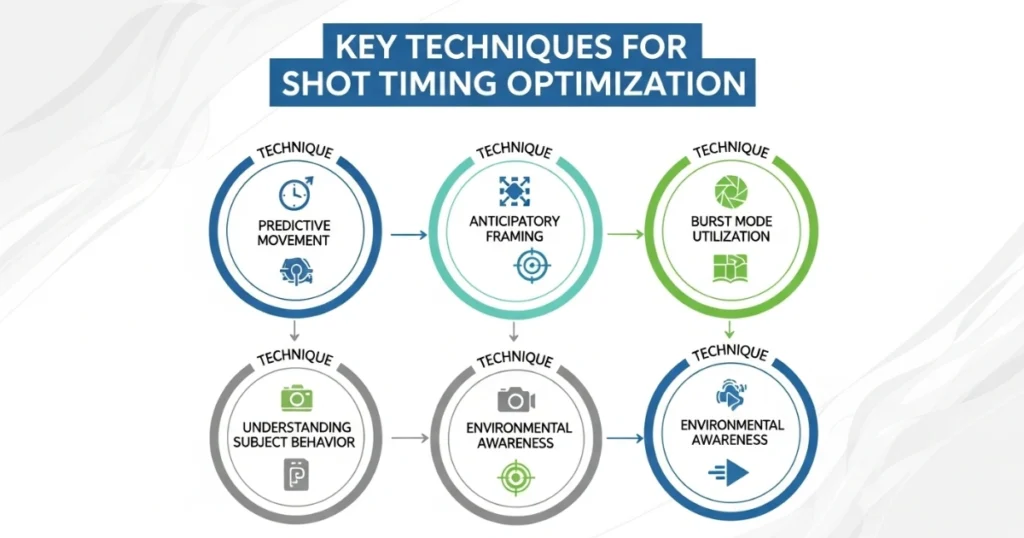Shot Timing Optimization: Maximizing Performance in Sports

Contents
Shot timing optimization is a game-changer for athletes aiming to elevate their performance in sports like basketball, soccer, tennis, and more. Whether you’re shooting a free throw, taking a penalty kick, or serving in tennis, perfecting the timing of your shot can significantly improve accuracy and efficiency. This article dives deep into the science, techniques, and strategies behind optimizing shot timing to help you maximize your performance. By understanding how to refine your timing, you can gain a competitive edge and achieve consistent results. Let’s explore how to master this critical skill.
What is Shot Timing Optimization?
Shot timing optimization refers to the process of fine-tuning the moment you execute a shot to achieve the best possible outcome. It involves synchronizing physical movements, mental focus, and environmental factors to release the ball or strike an object at the precise moment for maximum accuracy and power. This concept applies across various sports, from basketball jump shots to golf swings. By optimizing shot timing, athletes can improve consistency, reduce errors, and enhance overall performance.
Why Timing Matters in Sports
Timing is the backbone of athletic success. A perfectly timed shot can mean the difference between scoring a goal or missing the target entirely. Here’s why shot timing optimization is crucial:
- Accuracy: Proper timing ensures the ball follows the intended trajectory.
- Power: Releasing at the right moment maximizes force and speed.
- Consistency: Optimized timing leads to repeatable results.
- Mental Edge: Confident timing reduces hesitation and boosts focus.
To maximize performance, athletes must understand the mechanics and psychology behind shot timing. Let’s break down the key components.
The Science Behind Shot Timing
Shot timing optimization is rooted in biomechanics, neuroscience, and psychology. Each element plays a role in determining when and how a shot is executed.

Biomechanics of Timing
Biomechanics studies how muscles, joints, and tendons work together during movement. For instance, in basketball, the jump shot requires coordinating the legs, core, and arms to release the ball at the peak of the jump. Releasing too early or too late can disrupt the shot’s arc and accuracy. By analyzing movement patterns, athletes can identify the optimal release point to maximize performance.
Neurological Factors
The brain plays a critical role in shot timing. The cerebellum, responsible for motor control, helps coordinate muscle movements, while the prefrontal cortex aids in decision-making. Reaction time, hand-eye coordination, and muscle memory all influence how well an athlete can time their shot. Training these neurological pathways through repetitive practice can enhance timing precision.
Psychological Influences
Confidence and focus are vital for shot timing optimization. Anxiety or distraction can cause athletes to rush or hesitate, throwing off their timing. Visualization techniques and mental conditioning help athletes stay calm and execute shots at the right moment.
Key Techniques for Shot Timing Optimization
To maximize performance, athletes can adopt several techniques to improve their shot timing. These strategies combine physical practice, mental preparation, and technology.

1. Develop Muscle Memory Through Repetition
Repetition is the foundation of shot timing optimization. By practicing the same motion consistently, athletes build muscle memory, allowing their bodies to execute shots instinctively. For example:
- Basketball: Practice shooting from the same spot to perfect your release point.
- Soccer: Take repeated penalty kicks to time your strike with the ball’s motion.
- Tennis: Serve repeatedly to synchronize your toss and swing.
To maximize results, focus on quality over quantity. Perform deliberate, focused repetitions rather than mindless practice.
2. Use Video Analysis
Video analysis is a powerful tool for shot timing optimization. By recording your shots, you can review your movements frame by frame to identify timing errors. For instance, a golfer might notice they’re swinging too early, causing a slice. Many professional athletes use software like Hudl or Dartfish to analyze their performance and make adjustments.
3. Incorporate Timing Drills
Specific drills can help refine shot timing. Here are a few examples:
- Basketball: Practice shooting while a coach waves a hand to simulate a defender, forcing you to time your release under pressure.
- Soccer: Use a metronome to practice timing your run-up for penalty kicks.
- Tennis: Train with a ball machine to develop consistent serve timing.
These drills mimic game scenarios, helping you maximize performance under real-world conditions.
4. Leverage Technology
Wearable devices and sensors can provide real-time feedback on shot timing. For example:
- Smart basketballs: Track release time and arc to optimize jump shots.
- Golf swing analyzers: Measure swing speed and timing to improve drives.
- Wearable sensors: Monitor body positioning and movement for precise timing.
By integrating technology, athletes can gain data-driven insights to fine-tune their timing.
5. Master Mental Preparation
Mental preparation is just as important as physical practice. To optimize shot timing, athletes must stay focused and confident. Techniques include:
- Visualization: Picture the perfect shot before executing it.
- Breathing Exercises: Use deep breathing to stay calm under pressure.
- Positive Self-Talk: Reinforce confidence with affirmations like “I’ve got this.”
By combining mental and physical training, you can maximize your shot timing performance.
Sport-Specific Shot Timing Strategies
Different sports require unique approaches to shot timing optimization. Let’s explore how to apply these principles in popular sports.

Basketball: Perfecting the Jump Shot
In basketball, shot timing optimization focuses on releasing the ball at the peak of your jump. Here’s how to improve:
- Stance and Balance: Keep your knees bent and feet shoulder-width apart.
- Rhythm: Develop a consistent shooting rhythm (e.g., dip, rise, release).
- Follow-Through: Ensure your wrist flicks smoothly to maintain accuracy.
Practice shooting under different conditions, such as with a defender or after a dribble, to maximize performance.
Soccer: Timing Penalty Kicks
Penalty kicks require precise timing to strike the ball cleanly. Key tips include:
- Approach: Time your run-up to sync with the ball’s position.
- Body Positioning: Lean slightly forward to maintain control.
- Focus: Watch the ball, not the goalkeeper, to avoid mistiming.
Drills like practicing with a moving target can help optimize timing.
Tennis: Mastering the Serve
The tennis serve is all about synchronizing the ball toss and racket swing. To maximize performance:
- Toss Consistency: Practice tossing the ball to the same height every time.
- Rhythm: Develop a fluid motion from toss to swing.
- Footwork: Position your feet to generate power at the right moment.
Serve drills with a metronome or ball machine can improve timing precision.
Golf: Optimizing the Swing
Golf swings rely on timing the club’s contact with the ball. Key strategies include:
- Backswing Tempo: Maintain a smooth, controlled backswing.
- Weight Shift: Transfer weight from back foot to front foot at the right moment.
- Follow-Through: Ensure a full, balanced follow-through for consistency.
Using a swing analyzer can help identify timing issues and maximize performance.
Common Mistakes to Avoid
Even with the best intentions, athletes can make mistakes that hinder shot timing optimization. Here are some pitfalls to watch out for:
- Rushing the Shot: Anxiety can cause premature releases. Stay calm and focused.
- Overthinking: Overanalyzing mechanics can disrupt natural timing. Trust your training.
- Inconsistent Practice: Sporadic practice leads to inconsistent results. Stick to a routine.
- Ignoring Feedback: Failing to use video analysis or coaching feedback limits improvement.
By avoiding these mistakes, you can stay on track to maximize performance.
The Role of Coaching and Feedback

Coaches play a vital role in shot timing optimization. They provide objective feedback, identify errors, and suggest adjustments. For example, a basketball coach might notice a player releasing the ball too early and recommend a slight delay. Regular feedback sessions, combined with video analysis, help athletes refine their timing and achieve consistent results.
How to Track Progress in Shot Timing
Tracking progress is essential to ensure shot timing optimization efforts are paying off. Here’s how to measure improvement:
- Performance Metrics: Track shooting percentages, goal accuracy, or serve success rates.
- Video Comparisons: Compare old and new footage to spot improvements.
- Feedback Logs: Keep a journal of coach feedback and personal observations.
- Technology: Use apps or devices to monitor timing metrics over time.
By consistently tracking progress, you can stay motivated and maximize performance.
Advanced Tips for Elite Athletes
For advanced athletes looking to take shot timing optimization to the next level, consider these strategies:

- Micro-Timing Adjustments: Focus on split-second adjustments to perfect timing.
- Cross-Training: Practice timing in other sports to enhance overall coordination.
- Pressure Simulations: Train in high-pressure scenarios to mimic game conditions.
- Data Analysis: Use advanced analytics to identify subtle timing patterns.
These techniques can give elite athletes a competitive edge and help maximize performance.
Conclusion
Shot timing optimization is a critical skill for athletes aiming to excel in their sport. By understanding the science behind timing, adopting proven techniques, and avoiding common mistakes, you can significantly improve your accuracy, power, and consistency. Whether you’re a basketball player, soccer star, tennis pro, or golfer, mastering shot timing can elevate your game to new heights. Start implementing these strategies today, track your progress, and watch your performance soar. With dedication and practice, you’ll maximize your potential and achieve your athletic goals.






